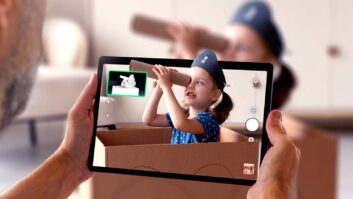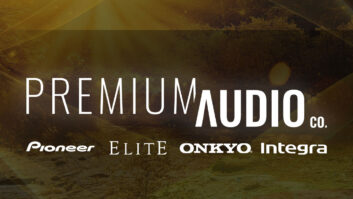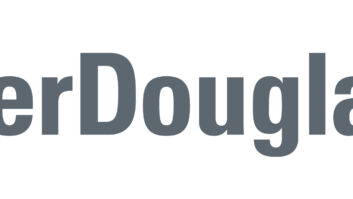Do TV manufacturers not want 3D to succeed?Just before Thanksgiving, I noted how 3D HDTV makers couldn’t get retail 3D demos straight. Just before CES, I noted how 3D HDTV makers were further mucking up the 3D market by introducing passive 3D HDTV when consumers hadn’t quite figured out or flocked to active 3D technology.
Then, at CES, several makers including LG, Sony and Toshiba, have completed the 3D HDTV idiocy trilogy by demonstrating glasses-free 3D, aka autostereoscopic. Toshiba devoted the enormous west wall on their booth to hyping a glasses-free 3D future.Why demo glasses-free 3D?
I know that you know that they know that we know that affordable glasses-free 3D is a chimera, a myth, a ghost.
What the TV makers aren’t telling you is that the technology and the pricing for glasses-free 3DTV is more than just a few years off of being ready for the mass-market retail floor. Yet hyping this chimera, this myth, this ghost could further paralyze consumers by building a false expectation of any-minute-now glasses-free 3D.
What is glasses-free 3D?
Basically, glasses-free 3D is accomplished by way of placing a filter in front of the LCD panel. This filter refracts or deflects the light from the LCD to create distinct left eye-right eye images. There are two types of autostereoscopic filters: a slit picket fence-like filter called parallax barrier or a circular filter called lenticular. (More specific definitions and explanations of parallax barrier and lenticular filtering can be found here.)
You could see artifacts of these filters in the varying glasses-free demos; many bore a faint resemblance to those “holographic” cards you used to get in Cracker Jack boxes. On most of these autostereoscopic displays, shifting slightly in one direction or the other shifted the image. They all had narrow viewing angles, some defined by footprints you had to stand in to see the full 3D image.
Of all the autostereoscopic demos at CES, the most impressive was a 24.6-inch OLED Sony. I could see no filtering artifacts of any kind – but then we were kept around 15 feet away from the small screen.
What about 2D?
One thing was missing from these glasses-free 3D demos – what 2D would look like. But I know that you know that they know that we know what 2D would look like through a filter – crap. Which means this current crop of autostereoscopic displays will never see the glaring fluorescent lights of retail.
In order for glasses-free 3D to work, the filters have to essentially disappear, which means they have to digitized. And the elimination of any remaining artifacts likely will need 4K x 2K resolution displays.
The necessary combinations of technologies isn’t impossible – everyone concerned is working feverishly on them, and we may end up with one solution from Company A, a second solution from Company B and a third solution from Company C.
Why not show off new tech?
So, what’s wrong with showing off future technology at CES? Two things.
One, I can’t think of a case where a replacement technology was so highly hullaballooed immediately after the basic technology first went on sale. This is like saying to consumers, “Isn’t this great? Don’t buy it, though. Something better is coming.” (Something better would be nice but do we really want more consumer confusion than is shown here?)
Two, it sets up false consumer expectations. 3D HDTV sales are, shall we say, lower than expected, only an estimated 1.8 million sets in the U.S. according to most sources. Consumers’ major complaint: having to wear glasses in the living room to watch TV. Unpowered passive glasses are less odious, but they are still essentially indoor sunglasses – and according to Larry David, only blind people and a******* wear sunglasses indoors.
What do active shutter 3D plus passive 3D plus glasses-free 3D in the market equal? Consumer confusion and no one buying 3D.
Stewart is Digital Tech Consulting’s Senior Analyst.













